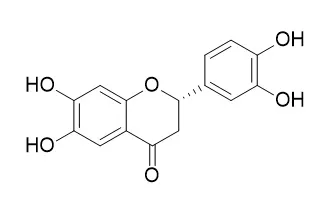Propolis has been used in folk medicine to improve health and prevent inflammatory diseases; however, the components that exhibit its anti-inflammatory activity remain unknown.
We herein investigated the effects of flavonoids isolated from Nepalese propolis on the IL-33 signaling pathway to clarify the anti-inflammatory mechanism involved.
METHODS AND RESULTS:
Of the 8 types of flavonoids isolated from Nepalese propolis, 4 types of compounds, such as 3',4'-dihydroxy-4-methoxydalbergione, 4-methoxydalbergion, cearoin, and chrysin, markedly inhibited the IL-33-induced mRNA expression of inflammatory genes including IL-6, TNFα and IL-13 in bone marrow-derived mast cells (BMMC). These four flavonoids also inhibited the IL-33-induced activation of nuclear factor κB (NF-κB), which was consistent with their inhibitory effects on cytokine expression. The effects of these flavonoids are attributed to inhibition of IL-33-induced activation of IKK, which leads to the degradation of IκBα and nuclear localization of NF-κB. On the other hand, other flavonoids isolated from Nepalese propolis, such as isoliquiritigenin, Plathymenin, 7-hydroxyflavanone, and (+)-medicarpin, had no effect on the IL-33 signaling pathway or cytokine expression.
CONCLUSIONS:
Therefore, these results indicate that 3',4'-dihydroxy-4-methoxydalbergione, 4-methoxydalbergion, cearoin, and chrysin are the substances responsible for the anti-inflammatory activity of Nepalese propolis. |






 Cell. 2018 Jan 11;172(1-2):249-261.e12. doi: 10.1016/j.cell.2017.12.019.IF=36.216(2019)
Cell. 2018 Jan 11;172(1-2):249-261.e12. doi: 10.1016/j.cell.2017.12.019.IF=36.216(2019) Cell Metab. 2020 Mar 3;31(3):534-548.e5. doi: 10.1016/j.cmet.2020.01.002.IF=22.415(2019)
Cell Metab. 2020 Mar 3;31(3):534-548.e5. doi: 10.1016/j.cmet.2020.01.002.IF=22.415(2019) Mol Cell. 2017 Nov 16;68(4):673-685.e6. doi: 10.1016/j.molcel.2017.10.022.IF=14.548(2019)
Mol Cell. 2017 Nov 16;68(4):673-685.e6. doi: 10.1016/j.molcel.2017.10.022.IF=14.548(2019)